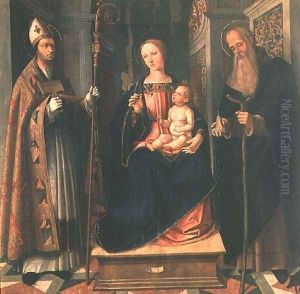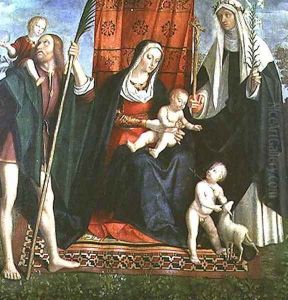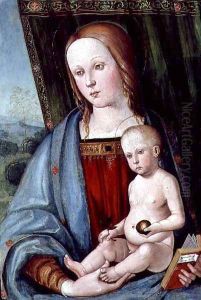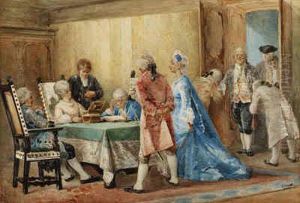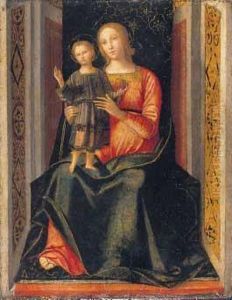Galeazzo Campi Paintings
Galeazzo Campi was an Italian painter born in 1475 in Cremona, Lombardy, a region that was a significant center for art and culture during the Renaissance. His family was deeply entrenched in the artistic community; he was the son of Bianca Campi, a painter whose exact works are not documented, and the father of Giulio Campi and Antonio Campi, both of whom would go on to become notable artists in their own right. This familial lineage underscores the Campi family's considerable contribution to the Northern Italian Renaissance, particularly in Cremona, where their work had a lasting impact on the region's artistic landscape.
Galeazzo's style was heavily influenced by the Lombard school, a regional distinction within the broader Italian Renaissance, known for its attention to detail and the vibrant use of color. Although there is relatively limited information on his specific training, it is clear that Galeazzo's work was influenced by contemporaneous currents in Italian art, including the work of artists such as Lorenzo Costa and Boccaccio Boccaccino, who were active in nearby cities. His art was characterized by its religious themes, a common focus for the period, with altarpieces and frescoes making up a significant portion of his oeuvre. Galeazzo's contributions to the churches and public spaces of Cremona and its surroundings were marked by a blend of tradition and innovation, incorporating the dynamism and anatomical precision that were hallmarks of the Renaissance.
Despite the lack of many surviving works definitively attributed to Galeazzo Campi, his influence is seen in the advancement and transition of Cremonese painting during the early to mid-16th century. His ability to fuse the rich color palette typical of the Lombard school with the emerging trends of the High Renaissance set the stage for the later achievements of his sons, particularly Giulio, who is often credited with bringing the Mannerist style to Cremona. Galeazzo's legacy, therefore, is not only in the works he left behind but also in his role as a patriarch of an artistic dynasty that would shape Northern Italian art for generations.
Galeazzo Campi died in 1536 in Cremona. Although he may not be as well-known as some of his contemporaries, his contribution to the Italian Renaissance, especially within his native Lombardy, remains significant. Through his family and his art, Galeazzo played a critical role in the development of a distinctly Cremonese style, bridging the gap between the late Gothic and the Renaissance and paving the way for the full flourishing of Mannerism in the region.
